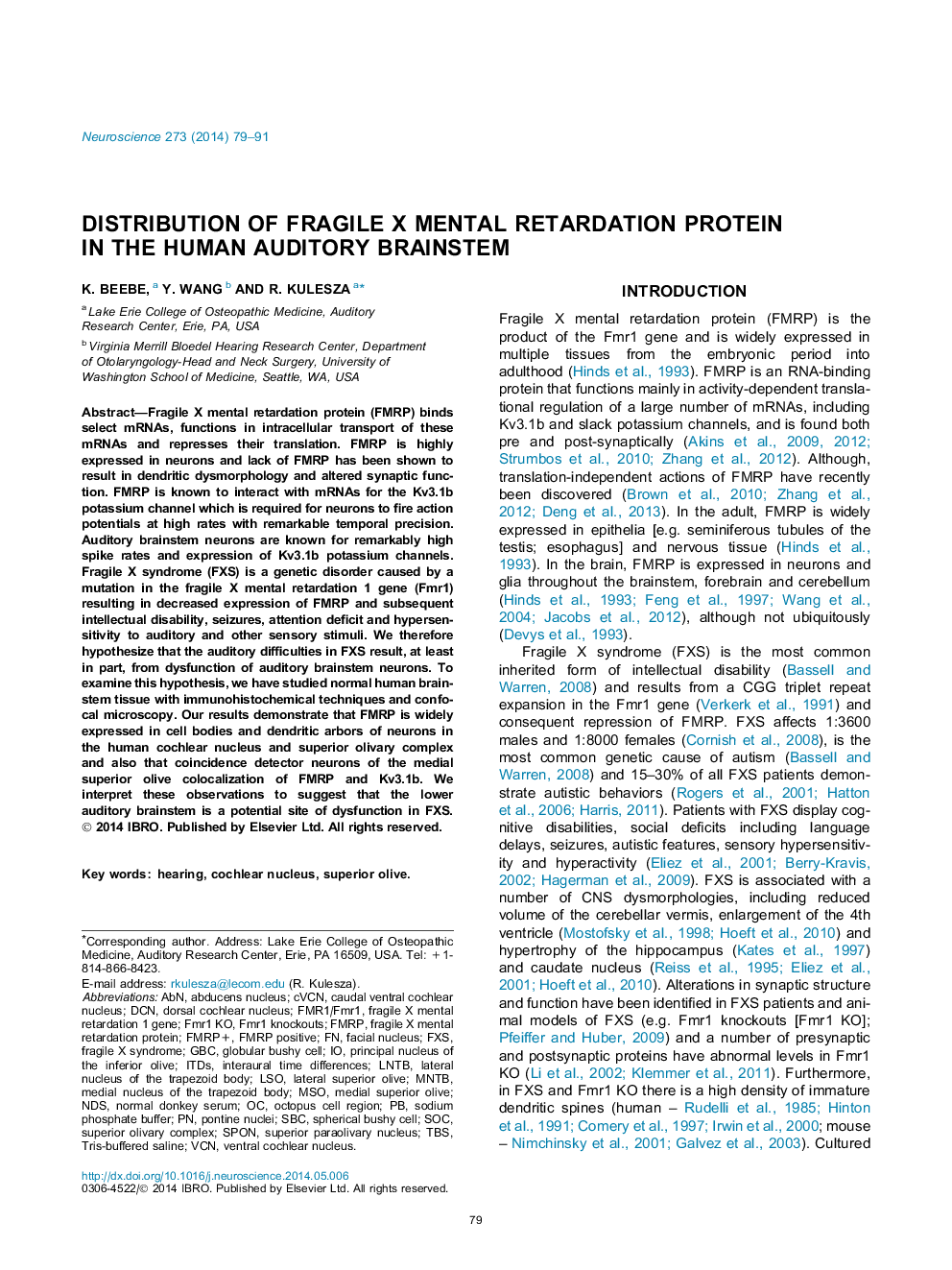| کد مقاله | کد نشریه | سال انتشار | مقاله انگلیسی | نسخه تمام متن |
|---|---|---|---|---|
| 6273430 | 1614803 | 2014 | 13 صفحه PDF | دانلود رایگان |

- FMRP is widely expressed in human brainstem neurons.
- Nearly all bushy and octopus cells in the VCN are FMRP-immunoreactive.
- FMRP is prominent in somata and dendritic arbors of the MSO.
- FMRP is colocalized with the Kv3.1b potassium channel in MSO neurons and boutons.
- Neurons in the human CN and SOC may be dysfunctional in FXS.
Fragile X mental retardation protein (FMRP) binds select mRNAs, functions in intracellular transport of these mRNAs and represses their translation. FMRP is highly expressed in neurons and lack of FMRP has been shown to result in dendritic dysmorphology and altered synaptic function. FMRP is known to interact with mRNAs for the Kv3.1b potassium channel which is required for neurons to fire action potentials at high rates with remarkable temporal precision. Auditory brainstem neurons are known for remarkably high spike rates and expression of Kv3.1b potassium channels. Fragile X syndrome (FXS) is a genetic disorder caused by a mutation in the fragile X mental retardation 1 gene (Fmr1) resulting in decreased expression of FMRP and subsequent intellectual disability, seizures, attention deficit and hypersensitivity to auditory and other sensory stimuli. We therefore hypothesize that the auditory difficulties in FXS result, at least in part, from dysfunction of auditory brainstem neurons. To examine this hypothesis, we have studied normal human brainstem tissue with immunohistochemical techniques and confocal microscopy. Our results demonstrate that FMRP is widely expressed in cell bodies and dendritic arbors of neurons in the human cochlear nucleus and superior olivary complex and also that coincidence detector neurons of the medial superior olive colocalization of FMRP and Kv3.1b. We interpret these observations to suggest that the lower auditory brainstem is a potential site of dysfunction in FXS.
Journal: Neuroscience - Volume 273, 25 July 2014, Pages 79-91